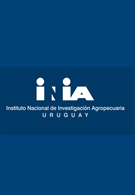Abstract. This article presents an economic evaluation of Uruguay?s beef industry competitiveness to quantify the effects of public policies (taxes, subsidies, social charges) on the various links constituting the beef export chain and estimate the impact of transfers of resources between the beef industry and other sectors of the economy. The Policy Analysis Matrix (PAM) techniques were employed to quantify the effects of public policies on the competitiveness of Uruguay?s beef industry. A series of PAM coefficients were calculated to assess the competitiveness of the beef export chain in 2010 and 2013 with comparison between the two years to make policy recommendations. Beef sector returns captured by private agents decreased from 30% in 2010 to 10% in 2013. Competitiveness of the beef export chain deteriorated between 2010 and 2013 due primarily to higher prices paid for live cattle by the beef slaughtering, manufacturing, and packing sector. Uruguay?s beef industry transfers resources to the larger economy via social security payments and is penalized as a result of high capital costs. Although three different sources of resource transfers were identified, more effort is needed to improve precision of estimations. Overall, Uruguay?s beef supply chain is relatively competitive, although that condition should not be taken for granted and subjected to increased taxation in order to support other national objectives. Competitiveness of export chains is critical to the economic and social wellbeing of small-economy countries. They must be efficient producing for the international markets at the time they constitute pillars of the whole economy. © 2018, Emerald Publishing Limited.

